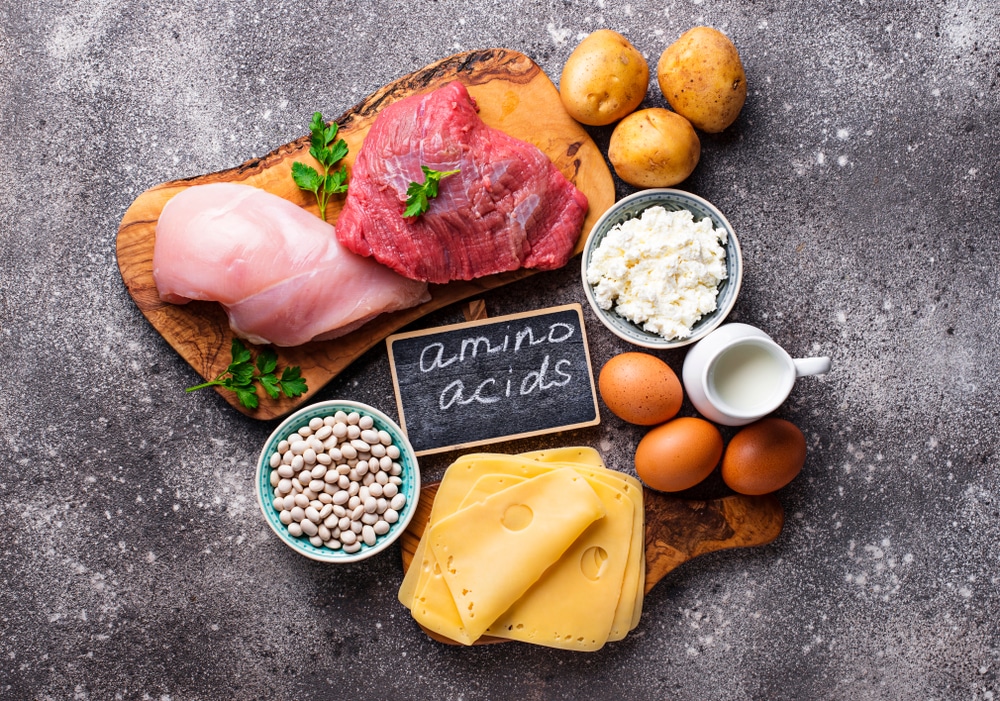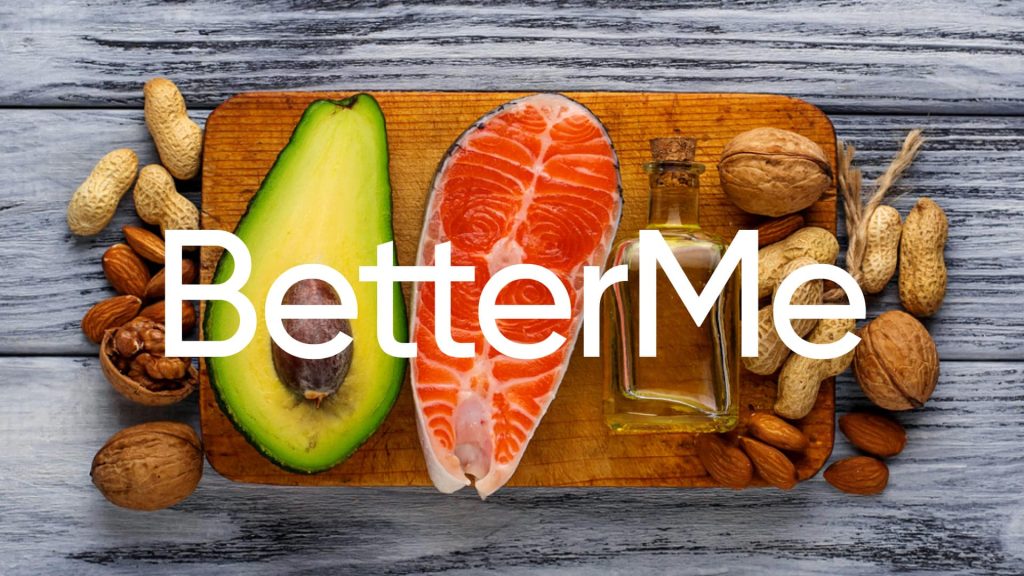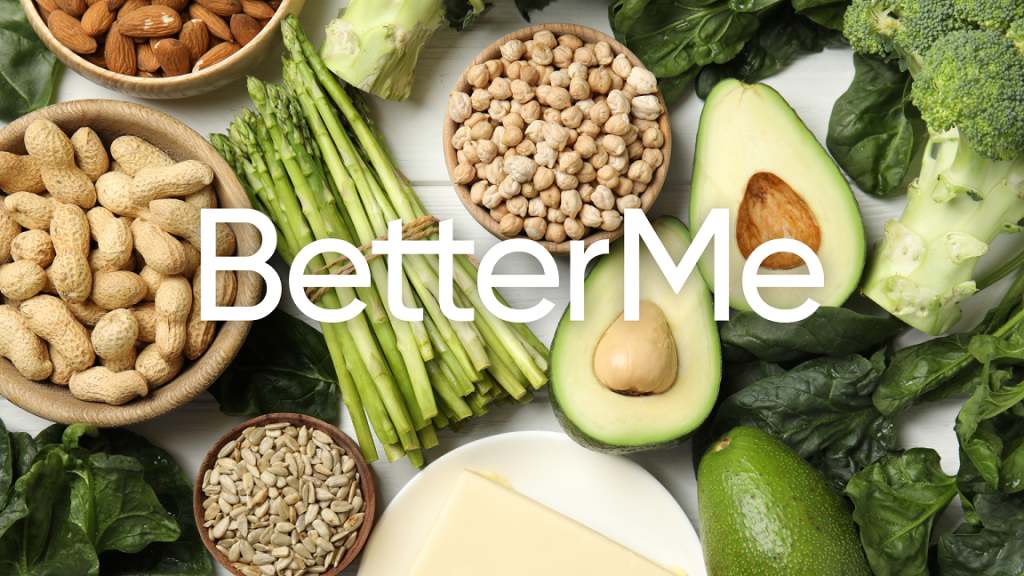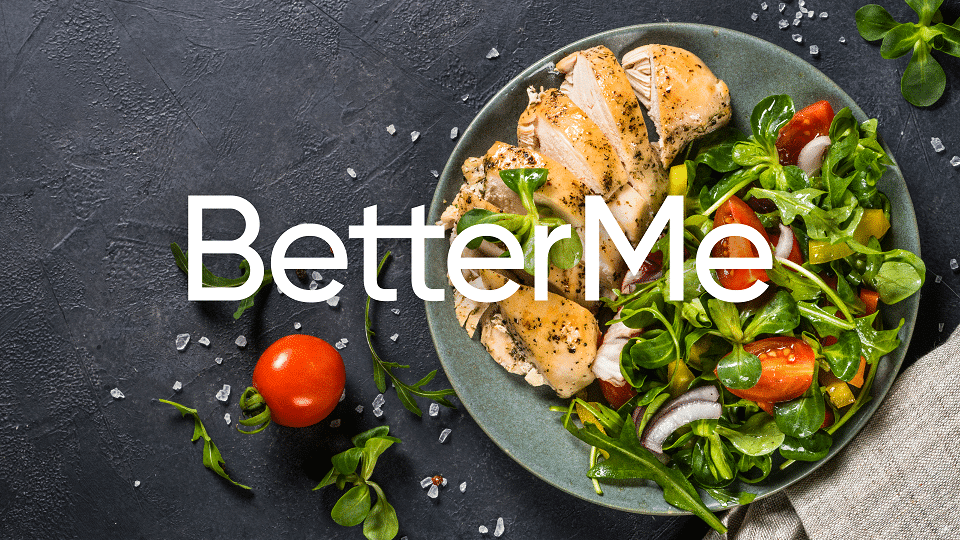Amino acids and proteins are the building blocks of our bodies, the body’s primary energy sources. They are categorized into three types (2); essential, non-essential, and conditional. However, they can be classified further depending on the type of intermediates they form during their metabolism.
These 20 amino acids are further classified into ketogenic amino acids, glucogenic amino acids, or both depending on their catabolic reactions. In the article, we shall dive deeper into the topic.
What Are Ketogenic Amino Acids?
Ketogenic amino acids are amino acids that are broken down to form ketone bodies. From the citric acid cycle, ketogenic amino acids can be degraded directly from pyruvate into acetyl-CoA, a pyruvate dehydrogenase process (1). After which, they’re further catabolized into acetyl-CoA and acetoacetate, then three ketone bodies, namely, Acetoacetate, Acetone, and β-hydroxybutyrate.
Ketogenic amino acids can be converted to water-soluble compounds called ketone bodies. Along with fatty acids, they provide energy when glucose is insufficient in the body, a process called ketogenesis (8).
Ketogenic amino acids follow the ketogenic metabolic pathway, where the amino acid is introduced into the body. It’s then degraded into water-soluble ketone bodies which are easier to transport in the body for energy (9).
Examples of ketogenic amino acids include Lysine and Leucine.
Lysine
Lysine is found in meats, peas, beans, and fish is an essential and exclusively ketogenic amino acid that helps metabolize fatty acids into energy. It may also have benefits such as:
- Helping to lower cholesterol levels in the body
- Aiding in the absorption of calcium
- Assisting in the formation of collagen
Leucine
Leucine is an amino acid found in peanuts, soybeans, lentils, and beef which is equally essential and exclusively ketogenic (11). It works alongside isoleucine to help in the production of energy in the muscles and the promotion of protein synthesis.
Now that you know which two amino acids are strictly ketogenic, let’s move to glucogenic amino acids.
BetterMe app will kick you out of the mental funk, shake off your extra weight, rid you of your energy-zapping habits, and help you sculpt the body of your dreams. Intrigued? Hurry up and change your life for the better!
What Are Glucogenic Amino Acids?
Glucogenic amino acids are amino acids that can be converted into glucose through a process called gluconeogenesis (7). Substrates needed for this process can be obtained from non-carbohydrate sources which then turn to pyruvate or any intermediates of the citric acid cycle, also known as the Krebs cycle or the TCA.
The glucose precursors which can be formed from the gluconeogenic process include alpha-ketoglutarate, succinyl Co-A, fumarate, and oxaloacetate.
The process results in the formation of oxaloacetate, which then produces glucose. In simple terms, glucose production from glucogenic amino acids means the amino acids have to be converted to alpha-keto acids then to glucose.
Examples of glucogenic amino acids include:
- Alanine
- Arginine
- Asparagine
- Aspartic acid
- Cysteine
- Glutamic acid
- Glutamine
- Glycine
- Histidine
- Methionine
- Proline
- Serine
- Valine
What Is The Difference Between Glucogenic And Ketogenic Amino Acids?
The difference between glucogenic amino acids and ketogenic amino acids lies in their metabolic pathways (6). Ketogenic amino acids follow ketogenesis where amino acids and fatty acids break down to produce ketone bodies. Consequently, they produce energy in the body to supplement or replace glucose. Glucogenic amino acids are non-carbohydrate carbon substrates that are converted into glucose.
From a chemistry point of view, ketogenic amino acids will turn pyruvate into acetyl-CoA through pyruvate dehydrogenase. In contrast, glucogenic amino acids will turn pyruvate into either of the six intermediates of glycolysis in the gluconeogenic pathway or turn it directly into oxaloacetate with glucose as the end product.
None of these amino acids can play the role of the other unless they aren’t exclusive. This means the amino acid is both ketogenic and glucogenic. Below is a glucogenic and ketogenic amino acids list;
Ketogenic Only
- Leucine
- Lysine
Glucogenic Only
- Alanine
- Arginine
- Asparagine
- Aspartic acid
- Cysteine
- Glutamic acid
- Glutamine
- Glycine
- Histidine
- Methionine
- Proline
- Serine
- Valine
Ketogenic and Glucogenic Amino Acids
- Tryptophan
- Isoleucine
- Phenylalanine
- Tyrosine
- Threonine
Read More: 28 Day Keto Diet Plan: All the Facts You Need to Get Started
How Are Ketogenic Amino Acids An Important Source Of Fuel?
During certain circumstances such as fasting – intermittent or full, starvation, insufficient insulin, ketogenic stress, or keto dieting, the body has limited access to glucose/ blood sugar levels, thanks to the lower carbohydrates levels. In such a case, the body has to use alternative methods to create energy in the body.
Here’s where ketogenesis comes to play; as a catabolic pathway of metabolism, ketogenesis will use fatty acids in the body along with ketogenic amino acids to produce energy through water-soluble compounds called ketone bodies.
The Process
Fatty acids in your body will undergo β-oxidation in the liver, precisely, the mitochondria cells, to form acetyl-CoA. From the citric acid cycle, acetyl-CoA will be further oxidized to acetoacetyl-CoA and then by the mitochondrial electron transport chain to generate energy and three molecules; ketone bodies.
Ketogenic amino acids such as leucine can also feed the cycle to form acetoacetate and ACoA, which then produces ketones.
The three ketone bodies, Acetoacetate, D-3-hydroxybutyrate, and Acetone, will transport energy to the body’s major organs, including the heart, brain, and skeletal muscles, by monocarboxylate transporters one and two.
β-Hydroxybutyrate and acetoacetate can pass through membranes easily and are therefore a substantial energy source for the brain, which can’t directly metabolize fatty acids. The brain will then receive 60-70% of its required energy from ketone bodies.
Studies show that two dominant ketone bodies, acetoacetate, and β-hydroxybutyrate, can effectively substitute glucose as the predominant fuel source for the brain mechanism (4). This means that fatty acids and ketogenic amino acids can be used as fuel sources for the body.
Ketogenesis can further lead to ketosis, which is where the body doesn’t have enough carbohydrates to burn for energy and hence uses fat and ketones as body fuel. Ketosis is common with low-carb diet programs such as keto diets as it has multiple potential benefits, including weight loss and weight management.
Why Can’t Ketogenic Amino Acids Make Glucose?
Amino acids are catabolized differently depending on their carbon skeletons and which intermediates they form after they have been fed into the citric acid cycle.
From the image, you can see that from the pyruvate, ketogenic amino acids breakdown down to acetyl-CoA and acetoacetate in that order. However, glucogenic amino acids form glucose precursors such as succinyl-CoA, malate, and oxaloacetate to form glucose.
Theoretically, ketogenic amino acids should also follow the cycle to form glucose; however, humans use both carbon atoms in ketogenesis to form carbon dioxide and water, leaving nothing else to use in the process as it would all be completely oxidized.
If Ketogenic amino acids joined the gluconeogenic pathway, it would mean that acetyl-CoA should revert to pyruvate which can’t happen. Even if it would, it would combine with oxaloacetate to form citrate.
Ketogenic Amino Acids And Weight Loss
You have learned that ketogenic amino acids can substitute as a fuel source in your body. So you’re thinking fats in your body will be burnt out and you lose weight. Part of that is factual.
When the body is on a strict diet, with no excess food, the body’s metabolic pathway changes to allow ketogenic amino acids and fatty acids to produce ketones which keep your body fueled; a process called ketosis.
You can achieve ketosis through fasting or low-carb dieting, the ketogenic diet. Both forms of ketosis can and will result in weight loss; however, one of them is safer.
Lean and toned-up body isn’t just a far-fetched fantasy. Check out the BetterMe app and watch it propel your weight loss journey into high gear!
Starvation Ketosis And Ketogenic Ketosis
Ketosis is a metabolic state where your body seeks and provides alternative energy sources for the brain using ketones because of a low-carb diet or fasting (10). Both types of ketosis will allow your brain and other major organs in the body to function effectively; however, starvation ketosis does more harm than good.
Before we jump into the explanation, let’s have a look at how your body gets into the state of ketosis.
- Glycogen depletion – the primary energy source is still glycogen, but it’s reducing and getting replaced by ketones, though in small amounts.
- Glucogenic phase – glycogen is depleted in the body and alternative energy sources begin to produce energy. Here, you may experience the signs and symptoms that you’re in ketosis (12).
- Ketogenic phase – protein breakdown has decreased and more fats and ketones are now being used.
With your body in full ketosis state, you’re going to see a few changes in your body. That’s when you may realize the difference between starvation ketosis and ketogenic ketosis.
While both result in weight loss, starvation ketosis will lead to a more dangerous weight loss, including reduced muscle mass. Starvation ketosis from fasting leaves the body dry and lacking food sources neither carbs, proteins, nor fats, so the body will use every form of protein (not fat) to turn to glucose then energy.
The keto diet consists of 70% to 75% fat, 15% to 25% protein, and 5% carbohydrates. This means even with limited carbohydrates, the body still has access to energy from fat and protein, therefore, preserving muscle mass and creating body fuel through ketones.
This means you can aim for ketogenic ketosis if you’re looking to lose weight.
Benefits Of Ketosis
Still, on ketosis, let’s have a look at some of its possible benefits (14):
- Stimulates mitochondrial production – this will ultimately help in the regeneration of cells necessary for energy production.
- May Protect and Regenerate the nervous system – ketones can help to preserve the function of aging nerve cells and the regeneration of damaged cells.
- Ketones may decrease oxidative stress in the body which then helps the body to protect itself from diseases or damages from free oxygen radicals.
- May prevent the growth of cancer – some studies have shown that ketones can’t fuel cancer cells, leaving them vulnerable to the immune system which can then eliminate them.
- Improves brain function – ketones may help fight against certain brain illnesses such as Parkinson’s disease, autism, Alzheimer’s disease, and epilepsy.
Ketogenic Amino Acids That Aid With Weight Loss
Upon further studies, it’s been demonstrated that some ketogenic amino acids can be used to gain muscle, reduce weight, and help with exercise performance. These are branched-chain amino acids, BCAA (3). These branched-chain amino acids are only three, which have been found to have a significant impact on weight loss and muscle recovery during excess workouts (13, 5). Only two are Ketogenic.
These essential amino acids include:
- Leucine
- Isoleucine
Leucine
Leucine aids to build muscle by stimulating protein synthesis and the production of fat-burning hormones. It is found in cheese, seafood, beans, seeds, nuts, peas, pumpkin, beef, pork, chicken, supplements like whey protein, and plant proteins (11).
Isoleucine
Isoleucine is an isomer of leucine that helps promote muscle recovery after exercise. It is found in proteins such as beans, almonds, brown rice, meat, fish, eggs, lentils, chia seeds, grains, and nuts.
Read More: Snacks With No Carbs: The Ultimate Zero-Carb Food List To Keep You In Ketosis
Three Tasty Keto Recipes
Here are three examples of simple, tasty and healthy recipes you can use.
Tasty Meaty Cabbage Rolls with Tomato Sauce
Preparation time – 1 hour 45 minutes
Ingredients:
- One can of diced tomatoes
- A tablespoon of vinegar
- Salt
- Freshly grounded black pepper
- ¼ cup extra virgin olive oil
- One teaspoon of onion powder
- 1 teaspoon of garlic powder
- One teaspoon of dried oregano
- Half a teaspoon of red pepper flakes (optional)
- Cabbage leaves
- One pound ground beef
- ¾ pound pork
- Cauliflower rice
- Three green onions – thinly sliced
Directions:
- Preheat the oven to 375°F.
- Puree the tomatoes along with spices and vinegar. Remember to season with salt and pepper.
- In a large pot or deep skillet, adjust heat to medium and heat the olive oil.
- Add the pureed tomatoes and let simmer in medium to low heat for 20 minutes. Leave it till it thickens.
- Boil enough water to blanch the cabbage leaves. Dip them in water till their tender and flexible then set aside.
- Make the roll filling in a large bowl by mixing the ground meats, cauliflower rice, green onions, parsley, and some sauce. Season with salt and pepper.
- Spread a thin layer of sauce on the bottom of a large baking dish.
- Using a paring knife, cut out the hard triangular rib from each cabbage leaf. Place about ⅓ cup filling into one end of each leaf, then roll up, tucking in the sides as you roll.
- Place rolls seam-side-down on top of sauce in the baking dish. Spoon remaining sauce on top of cabbage rolls.
- Bake for 45 minutes to 55 minutes until the meat is cooked through.
Creamy Chicken and Cauliflower Salad
Ingredients:
- 500g of cauliflower
- Two tablespoons olive oil
- One teaspoon of chicken style stock powder or a third cup of chicken-style stock
- A third cup of pure cream
- Three teaspoons of wholegrain mustard
- One tablespoon of chopped fresh chives, leave some to garnish
- Two teaspoons of lemon juice
- 100g of streaky bacon
- 100g of baby spinach
- 400g of chicken tenderloins
- 100g of rocket leaves
- A third cup of roasted macadamia nuts, chopped
Directions:
- Preheat the oven to 180° C.
- Line your baking tray with a baking sheet, add in your cauliflower.
- Drizzle about a teaspoon of olive oil on the cauliflower and sprinkle some chicken stock powder.
- Bake for 25 minutes or until tender.
- Take a saucepan and add in your chicken stock and mustard. Bring to a boil then lower the heat to let simmer for 2-3 minutes or until sauce is reduced by half. Stir through chives and lemon juice, keep warm.
- Heat the remaining oil in a frying pan over medium-high heat and cook the chicken and bacon until each side is golden chips.
- Arrange the salad leaves, chicken, cauliflower, and bacon on a serving platter.
- Finish by drizzling with the cream sauce and sprinkle with macadamia nuts and remaining chives.
Bacon, Eggs, And Cheese Roll-Ups
Ingredients:
- Six large eggs
- Two tablespoons of milk
- 1/4 teaspoon of garlic powder
- Salt
- Freshly ground black pepper
- One tablespoon of butter
- One tablespoon of finely chopped chives
- Twelve slices of bacon
- Two cups of shredded cheddar
Directions:
- In a large bowl, whisk together eggs, milk, and garlic powder and season with salt and pepper.
- In a non-stick skillet over medium heat, melt butter. Add in the eggs and scramble for three minutes then stir in chives.
- On a cutting board, lay out three strips of bacon. Sprinkle the bottom third with cheddar and top with a large spoonful of scrambled eggs. Roll up tightly.
- Repeat with remaining cheese and eggs.
- Return skillet to heat and add bacon roll-ups seam side down. Cook until crispy on all sides.
Conclusion
Amino acids go through two different metabolic pathways which classify them as ketogenic and glucogenic amino acids. They both play an essential role as energy sources in your body when you lack ready glucose. From the article, you can see that ketogenic amino acids have additional benefits gained through ketogenesis.
Once your body has degraded pyruvate to ketone bodies, your body can function well with high support for the brain. Nonetheless, this doesn’t mean you don’t need glucogenic amino acids as they work hand in hand to obtain optimal body function.
DISCLAIMER:
This article is intended for general informational purposes only and does not address individual circumstances. It is not a substitute for professional advice or help and should not be relied on to make decisions of any kind. Any action you take upon the information presented in this article is strictly at your own risk and responsibility!
SOURCES:
- Acetyl-CoA (2001, sciencedirect.com)
- Amino acids (2020, medlineplus.gov)
- BCAA benefits ( 2019, medicalnewstoday.com)
- Brain metabolism during fasting (1967, pubmed.nih.gov)
- Exercise-induced muscle damage is reduced (2012, pubmed.Nih.gov)
- Glucogenic and Ketogenic Amino Acids (nd., khanacademy.org)
- Gluconeogenesis (2018, sciencedirect.com)
- Ketogenesis (2021,ncbi.nih.gov)
- Ketogenic amino acid (2014, sciencedirect.com)
- Ketosis (2020, webmd.com)
- Leucine (2021, rochester.edu)
- Sign of Ketosis (2020, medicalnewstoday.com)
- The effects of heavy training and BCAA supplementation (2013, biomedcentral.com)
- Why is the keto diet good for you? (2020, medicalnewstoday.com)




















